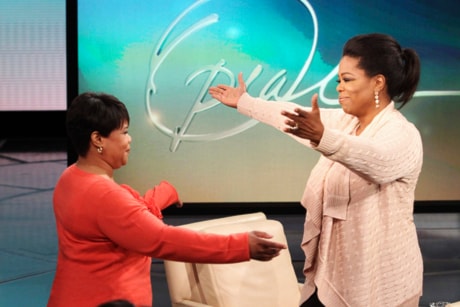TORONTO — When Hamilton, Ont., resident Bill Hanson heard Oprah Winfrey was reuniting with a long-lost family member, he made sure to tune in. Just a few weeks earlier, the 66-year-old met three siblings he never knew he had.
So when Winfrey introduced her half-sister Patricia to the world on air last week, it was like it was happening to him all over again.
“It gave me the same overwhelming feeling. I understood where Oprah and the girl were coming from. She didn’t want to cause upset. Neither did I.”
Hanson was conceived when his father was overseas during the Second World War, and given up for adoption soon after his birth. When Ontario opened birth and adoption records in June 2009, his wife Cathie urged him to look up his family. The birth certificate showed he had two sisters and a brother, who he found within a year with the help of an Internet-savvy friend.
On Jan. 9, he was welcomed into the family at an emotional reunion at his Hamilton home.
“I haven’t really processed it yet,” he says.
The phones have been ringing off the hook at the Adoption Council of Ontario since the airing of The Oprah Winfry Show episode, says clinical coordinator Noelle Burke.
“I just got a call from a woman who said she was feeling a little lonely. That’s not usually what I hear on the first call. They usually say they want medical information.”
Many adoptees feel compelled to find out their history, even if it is not a happy story.
“There is a drive to search for family of origin. It’s very powerful.”
She predicts we will see similar revelations in Ontario ever since Ontario opened its adoption records on June 1, 2009. It now allows adult adoptees and biological mothers to apply for copies of their adoption orders and birth registrations, although those who wished to remain anonymous can protect their identity with a veto.
Under the old system, adoption records were sealed unless both child and parent wanted to find each other.
There have been 250,000 adoptions since 1921 and since the rule changes, more than 12,000 people have applied for birth information, according to ServiceOntario which handles the requests.
Madeleine Meilleur, Minister of Community and Social Services, has heard many anecdotes about family reunions since the changes came into effect and says mothers are as anxious as children to reunite.
The former maternity nurse saw many young women give babies for adoption.
“No mother gives a child up for adoption without pain,” she says.
The Oprah story is not unique, but the publicity may spur others to seek out family.
Titia Ellis’s jaw dropped when she saw the Oprah show. She just published a book about her own journey to find her birth family, The Search, A Memoir of an Adopted Woman.
Ellis, who has a PhD in psychology, struggled all her life with feelings of shame because she was adopted. She was in her late 30s when she set out to find her mother. The search took 12 years. Now 76 and retired in Vermont, she has become close to newly found half-sister Susan Copeland, 65, who bears a striking resemblance to her and who also lives in Vermont.
“I was looking for love and healing and identity of who I am,” she says, adding that she was touched by the way Oprah and her sister Patricia recognized their mother’s feelings of shame.
“Oprah handled it all with integrity and grace,” says Ellis.
Stephen Elliott is so thrilled at meeting his older brother, David Jeffries, that they’ve started a web page to air similar stories of brothers finding each other: biobrothersunited.org.
Elliott, a Toronto marketing executive, was in his 20s when he and his younger brother, Chris, learned that they had an older brother who had been adopted when their parents were very young.
They immediately went searching for him, but it wasn’t until the new rules regarding open birth records came into place that Jeffries made the move to find his natural family.
Their story is told on their website and it continues to evolve. His father has been “transformed” since his eldest child has come back into their lives, says Elliott, and his mother “is profoundly happy.”
Even though Bill Hanson never did get to meet his birth mother, he feels she “mothered” him from afar. She turned to her family doctor for assistance and he placed the baby with a family that had lost a son in the war.
The two families lived near each other in Hamilton and there were many times their paths would have crossed including at a local fish and chip shop where she worked.
“I truly believe she loved him,” says Cathie.
Although the adult children were shocked to find out about their beloved mother’s misstep, they rallied.
“All parents and adoptive parents are now deceased, so the details of this story went to their grave with them, leaving us to wonder,” Hanson’s half-sister Betty Flaherty says.
